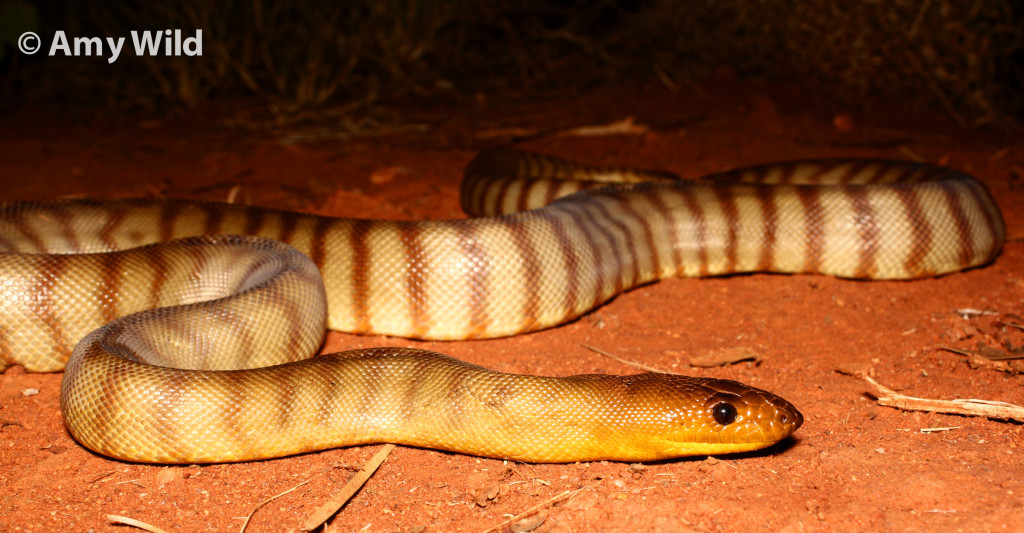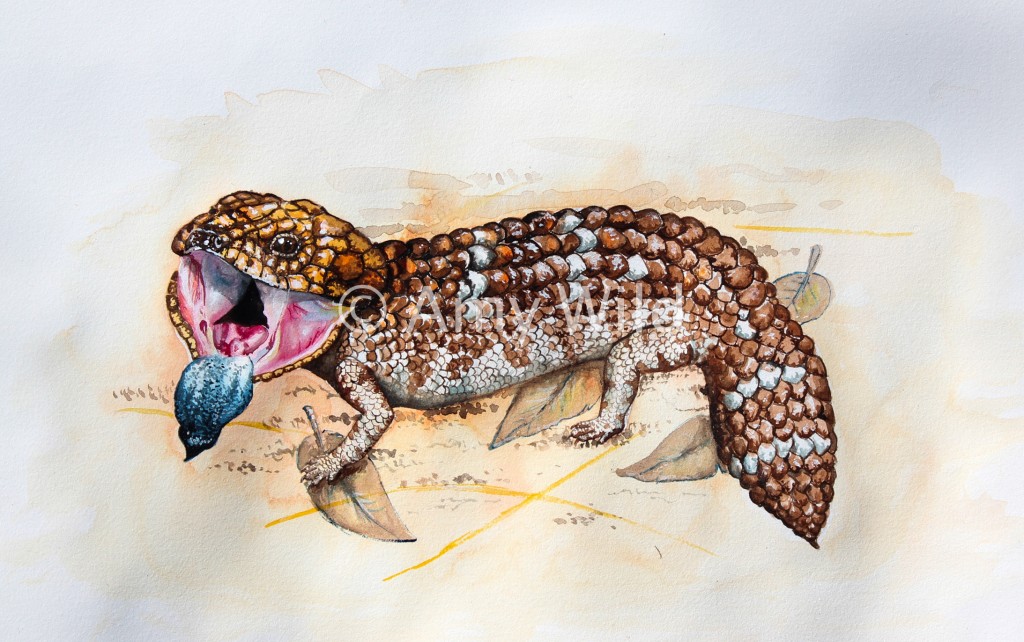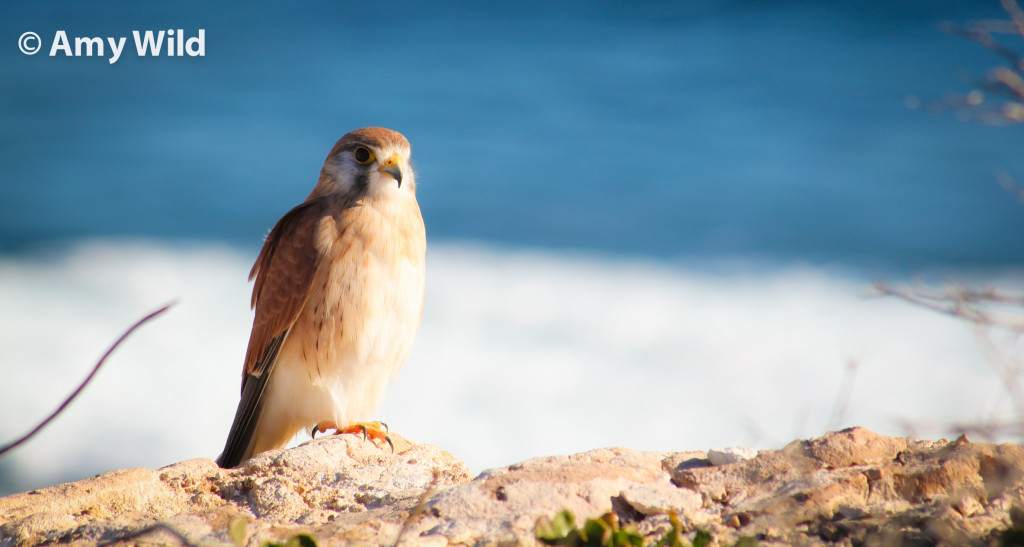Welcome to one of my favourite Australian snakes! This guy might look dangerous, but he’s actually a python, and therefore effectively non-venomous. The reason the Woma might look different is that they belong to a very unique genus: Aspidites is the only genus of pythons that do not have heat-sensory pits! Continue reading
Uncovering our Urodacus Scorpions
The two most species-rich scorpion families in Australia are Buthidae and Scorpionidae. Included in Scorpionidae is the genus Urodacus; they’re our big ones, sometimes up to 10 cm head to tail, with great big fearsome claws (chelicerae). Members of Buthidae, however, are much smaller; typically around 2 cm long; with tiny slender claws.
I’m sure I can guess which you think is the most scary! But you might be wrong. Continue reading
Bonding with Bobtails
Here’s a lizard we from Australia have all seen, or at least heard of in some sense! The Bobtail Lizard (Tiliqua rugosa) lives throughout southern and eastern Australia, and in most of its regions is highly common. Here in the southwest, it is not unusual to have a local bobby in your back yard if you have even a small amount of greenery. Being such a charismatic and recognisable reptile, they have acquired the most common names of any Australian lizard! Continue reading
Getting near to the Nankeen Kestrel
We have a lot of amazing birds in Australia, of all shapes, sizes, behaviours and conservation statuses! But did you know that one of our most common birds of prey is also our smallest, and possessed of a markedly uncommon hunting habit?
Another reason to live up the Now
I had a moment yesterday when I thought I’d broken my back. It was a private riding lesson, on a horse I knew and trusted and had never had any issues with; I’d ridden him dozens of times by myself without ever a hitch, and now I was under the tutelage of a professional. Continue reading
Parables of the Pilbara Olive Python
The Olive Python (Liasis olivaceus) is Australia’s SECOND LARGEST species of snake – the beautiful girl pictured here is relatively small for her kind! Two subspecies lie within the species – the relatively common ‘nominal’ subspecies (Liasis olivaceus olivaceus), whose population extends along northern Australia from the Kimberley to western parts of Qld, and its larger partner, the RARE Pilbara Olive (L. olivaceus barroni). Wow, you’re still reading! It gets better. Continue reading
Welcome to Wild Words!
Wild Words is a space for my short writings about wildlife, adventures and things I think worth sharing! When discussing wildlife, you will find my language is kept free of tricky words where possible, so that all visitors to this page may gain an easy understanding of what I have to share, should they desire. Having a strong background in zoology, I do however take great care with taxonomic and ecological accuracy. Enjoy, and Stay Wild!





